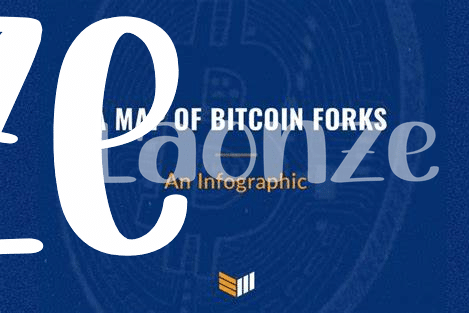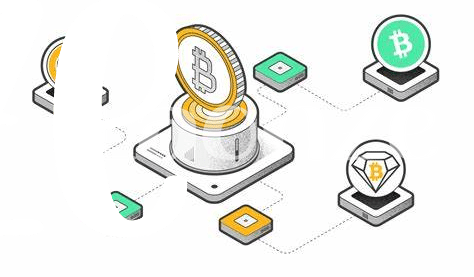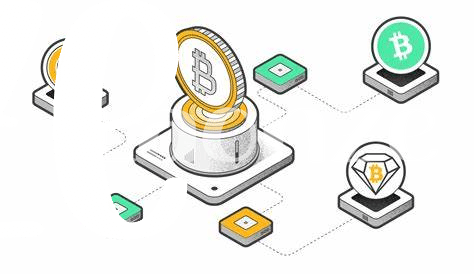🍴 What Exactly Are Bitcoin Forks?

Imagine you’re remodeling your house, and you’ve got two blueprints to work from. They both start with the same layout, but then, one blueprint shows a new room addition, while the other doesn’t. This is a bit like how Bitcoin forks work. They start with the original Bitcoin ‘blueprint’ (which is the blockchain) and then, at a certain point, a decision is made to go in a new direction with a different version of the rules. Some people decide to follow the new blueprint, while others stick to the original. This doesn’t mean the old Bitcoin house disappears; it just means there is now another house on the block with a different design.
Forks in the Bitcoin network are essentially updates or changes in the blockchain’s protocol. They are vital because they represent the community’s desire to improve or alter Bitcoin’s functionality. Think of it as a way to add new features or fix issues within the system without dismantling the whole structure. It’s a democratic process within the Bitcoin community, where users have the power to propose changes and, based on consensus, decide on the direction in which the blockchain technology evolves.
| Type | Description |
|——|————-|
| **Soft Fork** | A change that is compatible with older versions. Users can still play together nicely without having to adopt the new rules immediately. |
| **Hard Fork** | This is a big change that requires all users to upgrade to the new version. It’s like saying, “It’s time for a new game, but everyone needs to get the latest game board to play.” |
🛠 How Forks Shape Blockchain’s Tech Toolbox
Imagine a giant toolbox where each tool has its unique purpose in building and fixing things. That’s kind of what Bitcoin forks do for blockchain technology. Each fork, or major update, introduces new tools and features to the blockchain, allowing it to evolve and meet the changing needs of its users. Whether it’s improving speed, increasing safety, or adding new functions, these forks are vital for keeping the technology fresh and useful. It’s like getting an upgrade on your favorite app – suddenly, you can do more and do it faster.
One fascinating aspect of these updates is how they pave the way for innovation in the crypto world. Just as apps sometimes inspire whole new ways of communicating or doing business, forks can lead to breakthroughs in how we think about and use cryptocurrencies. They’re not just updates; they’re opportunities for creative minds to push the boundaries of what’s possible. This nurturing environment is crucial for the growth of the crypto space, drawing in more interest and investment. For a closer look at how cryptocurrencies are influencing even broader social changes, check out https://wikicrypto.news/cryptocurrency-donations-empowering-voters-in-political-processes, highlighting an exciting era of giving and participation in the political processes.
🗺️ Diving into Hard and Soft Forks Differences

Think of the blockchain as a bustling city road, and the transactions as cars cruising along. Occasionally, the city planners (developers) decide it’s time to make some changes to improve the flow of traffic or add new lanes. This is where we come across two major methods of making changes: hard forks and soft forks. A hard fork is like building a completely new road that splits from the main one; it’s a significant change that requires all drivers (users) to take this new route, creating a new direction for the traffic. This can lead to the creation of a whole new neighborhood (blockchain) if enough people decide to use it. On the other hand, a soft fork is more like adding new traffic rules without changing the road itself. It’s a subtler change, and if most drivers agree to follow these new rules, everyone can continue using the same road smoothly without splitting off.
Both methods play crucial roles in the evolution of blockchain technology. Hard forks can lead to the birth of entirely new cryptocurrencies, as seen with Bitcoin Cash, which emerged from a debate on how to best scale Bitcoin. Meanwhile, soft forks have introduced important updates with less disruption, like improving the transaction capacity within the existing Bitcoin framework. Through these forks, the blockchain continues to adapt and grow, much like a city that evolves to meet the changing needs of its inhabitants, fostering innovation and ensuring that the technology not only survives but thrives in the digital age.
💡 Creative Outcomes from Historical Bitcoin Forks

Imagine a world where digital money evolves, not through the slow, cautious steps of banks and governments, but through the adventurous spirit of its community. That’s the tale of Bitcoin forks. These aren’t mere splits in the digital road; they’re crucibles of innovation, birthing new features and cryptocurrencies, each with their own vision of the future. Take, for instance, the creation of Bitcoin Cash, aiming for faster transactions, or Bitcoin Gold, focusing on democratizing mining. These offshoots didn’t just expand the Bitcoin family; they pushed the boundaries of what cryptocurrencies could be. For those diving deeper into how these forks have not only expanded the ecosystem but also fostered a culture of bitcoin philanthropy and the blockchain, it’s clear that they’ve been instrumental in exploring new possibilities. Whether it’s enhancing security, increasing speed, or making digital currency more accessible, these forks have been at the forefront of encouraging experimentation and growth in the blockchain sphere.
🚀 Forks’ Impact on Crypto Innovation and Growth
Forks, in the world of cryptocurrencies, are much like branches on a tree, reaching out in new directions to explore the sunlight of innovation. Imagine a scenario where a group of developers believes that they can improve upon Bitcoin, either by enhancing its features or creating a new path that diverges from the original. This act of branching out has had a profound impact on the growth and evolution of the crypto landscape. It’s akin to opening up a toolbox and discovering new tools that we didn’t know we needed, but now can’t live without. For instance, some forks have led to significant improvements in transaction speeds and the overall scalability of networks, enabling cryptocurrencies to be more practical for everyday use. Furthermore, these forks often introduce groundbreaking features, such as enhanced privacy options or new consensus mechanisms, which fuel further experimentation and creativity within the community. As a result, the crypto ecosystem thrives, drawing in more developers, investors, and users, each attracted by the potential of what these new tools and paths might lead to.
Here’s a simple table showing a few forks and their contributions to crypto innovation:
| Fork Name | Year | Key Contributions |
|---|---|---|
| Bitcoin Cash | 2017 | Increased block size for faster transactions |
| Bitcoin Gold | 2017 | Democratized mining through ASIC resistance |
| Litecoin | 2011 | Introduced faster transaction confirmation times |
These innovations not only enhance the user experience but also push the boundaries of what’s possible in the realm of digital currencies, ensuring the continued growth and relevance of cryptocurrencies around the globe.
🌍 Forks Encouraging Global Blockchain Adoption

Imagine a world where the way we handle money is constantly evolving, much like the branches of a vast, growing tree. This is the world of blockchain, and Bitcoin forks are like the gardeners, shaping its growth. Every fork brings with it a possibility for new ways to use, save, and think about digital currency, which in turn, sparks interest across the globe. From the local market vendor in Argentina accepting crypto-payments to the tech-savvy entrepreneur in Seoul investing in digital assets, forks make the blockchain tree flourish in every corner of our planet.
Moreover, these changes aren’t just technical mumbo-jumbo; they have real-world impacts. For example, forks have paved the way for new methods of making political donations and even how central banks could operate in the future. This ongoing evolution encourages not just tech enthusiasts but also everyday folks and policymakers worldwide to take a fresh look at blockchain technology, understanding its potential to transform not only the financial landscape but how we interact with the digital world at large. Incorporating forks into the blockchain is not just about innovation; it’s about opening doors worldwide to new possibilities and encouraging diverse global adoption.
